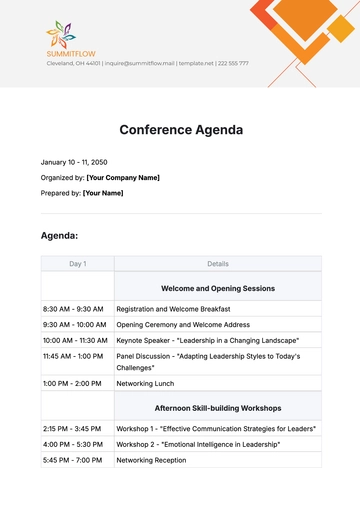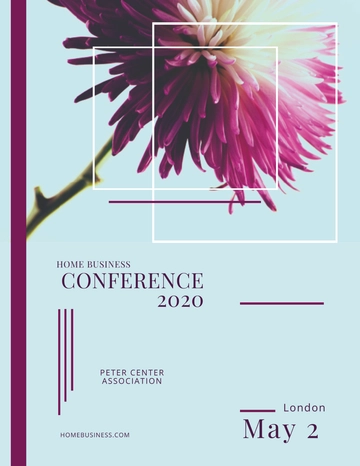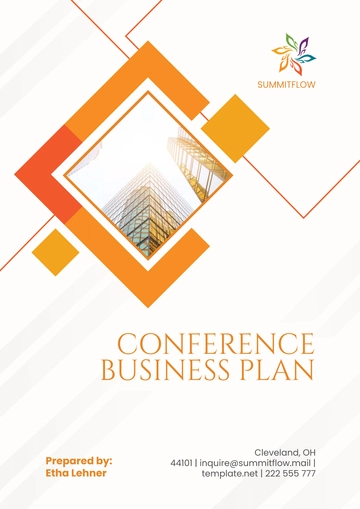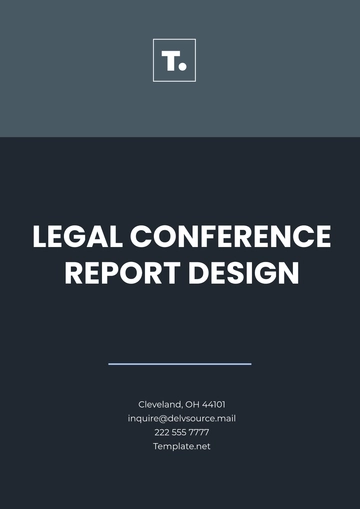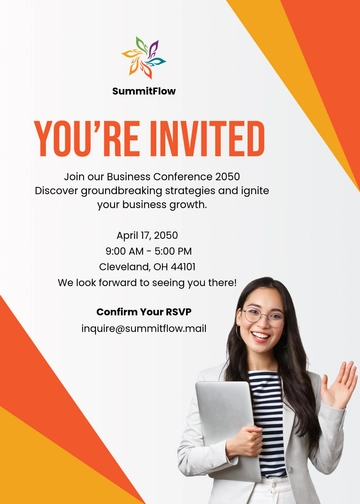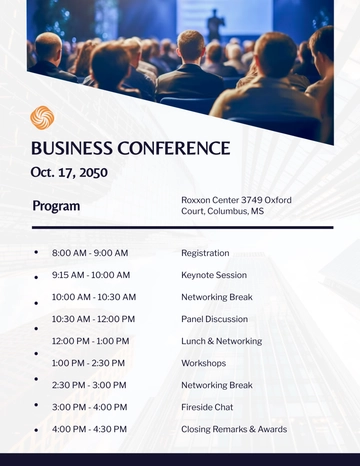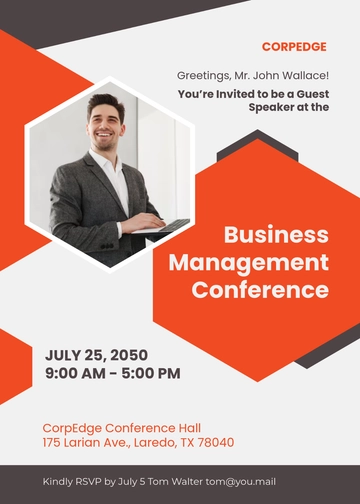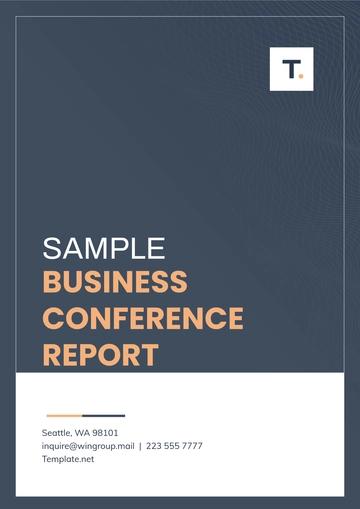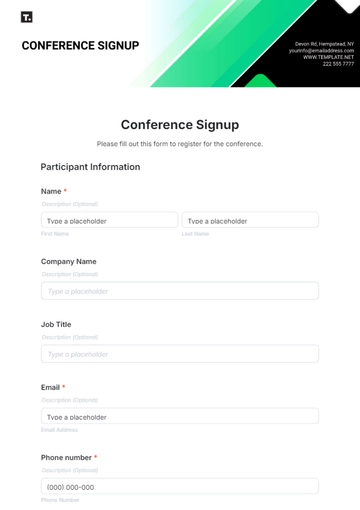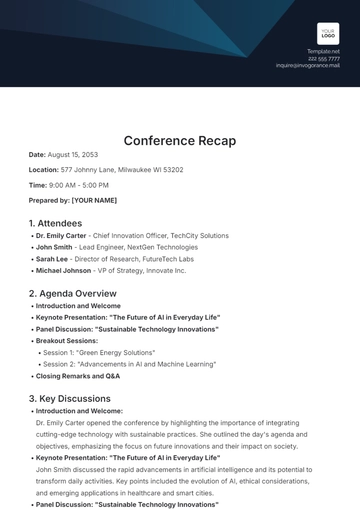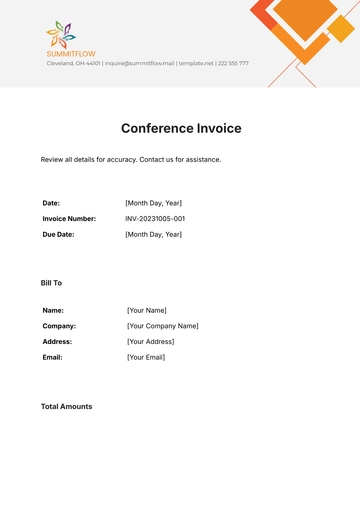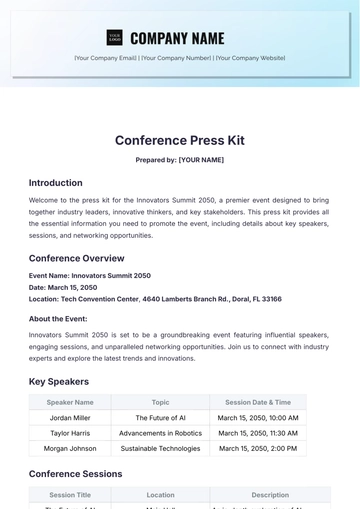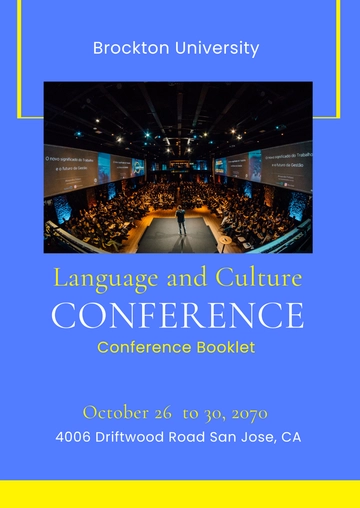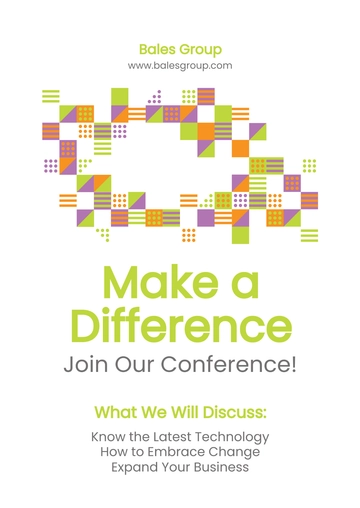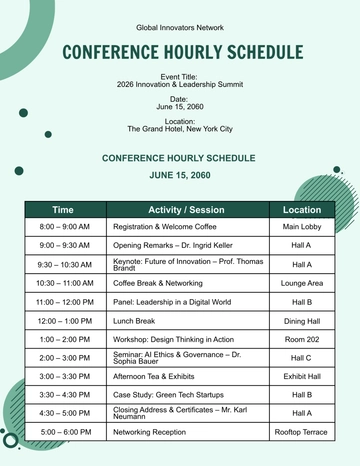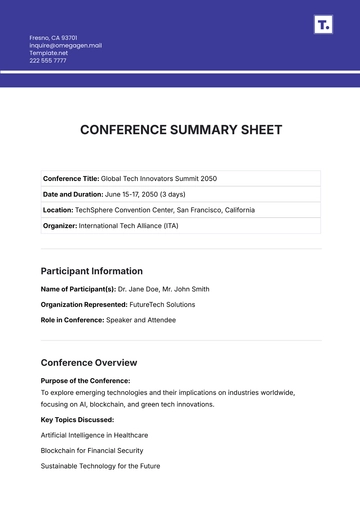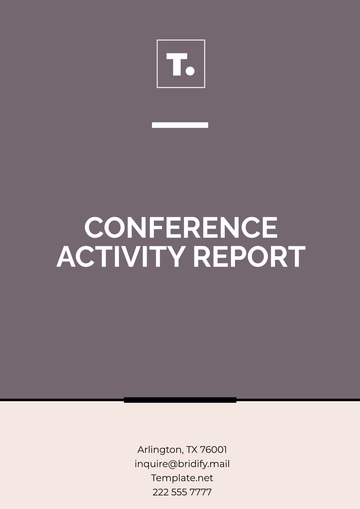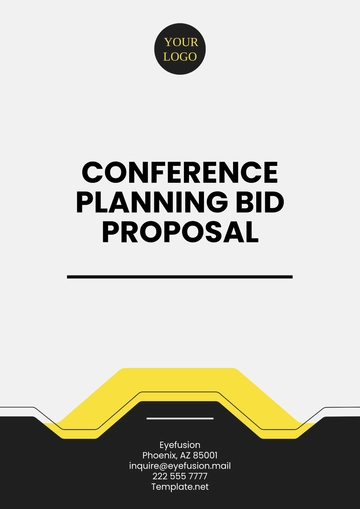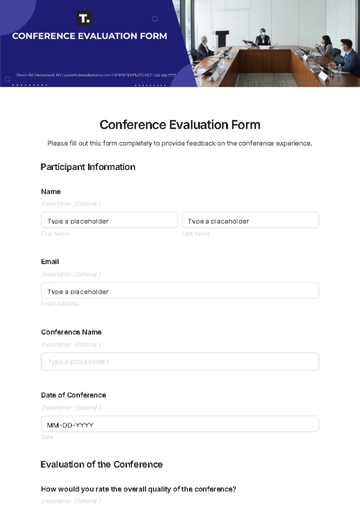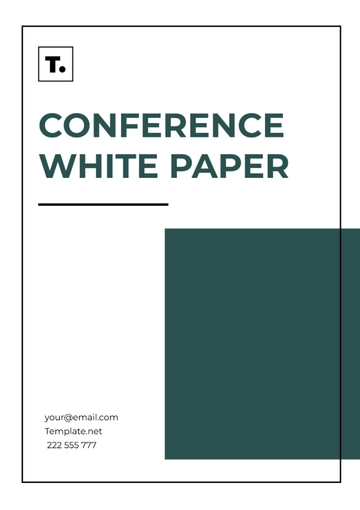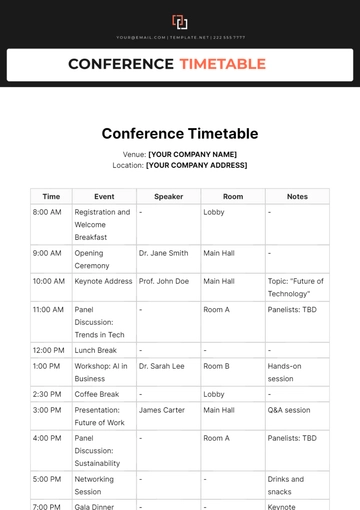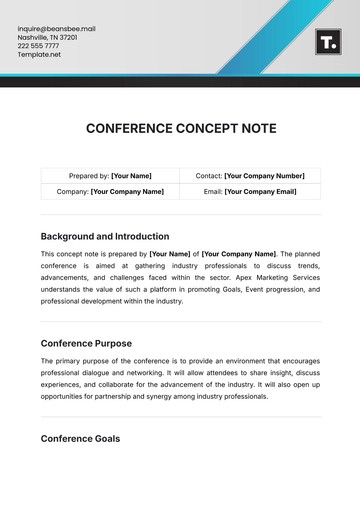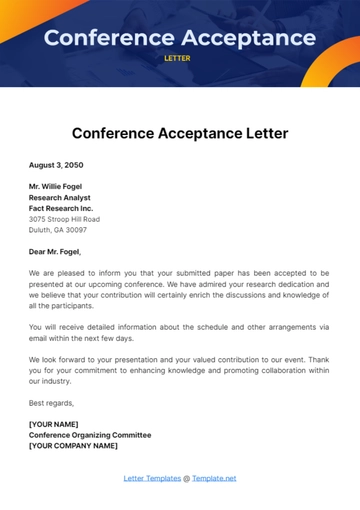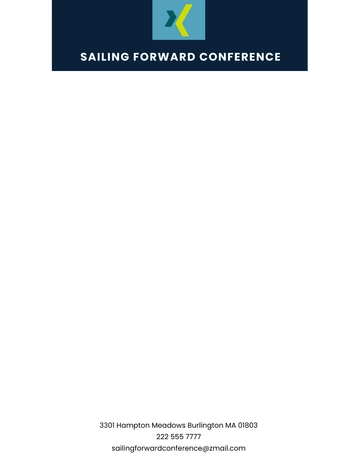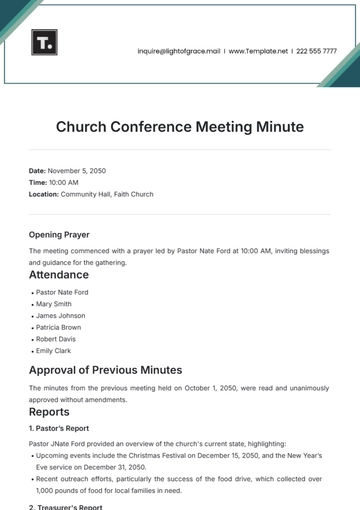Free Conference Management
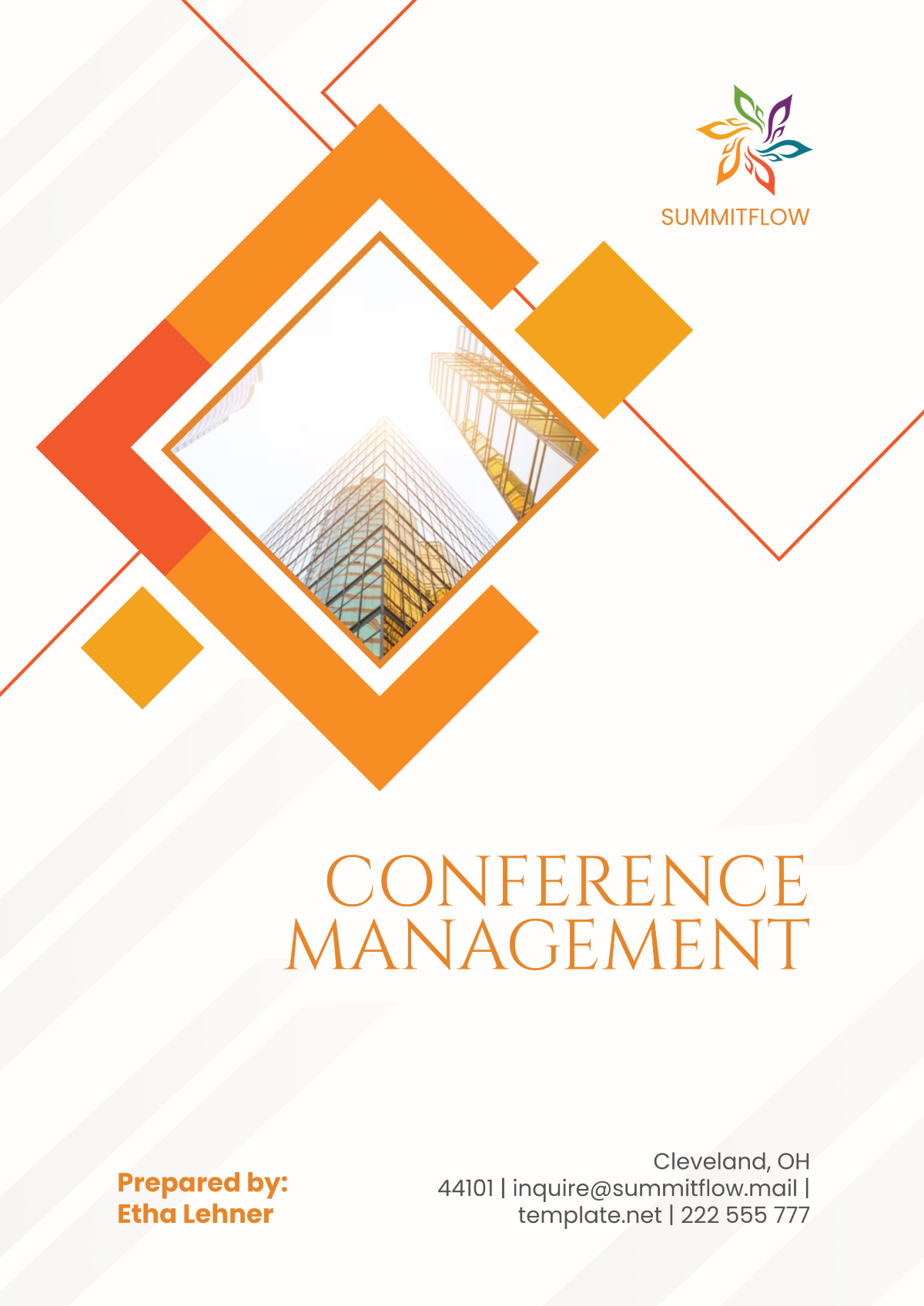
Conference management is the backbone of a successful event, ensuring that everything—from planning to execution—is handled seamlessly. The process encompasses every detail, from setting clear objectives to evaluating success after the event. For [Your Company Name], managing a conference means coordinating logistics, managing resources effectively, crafting strategic marketing, and leveraging cutting-edge technology to enhance the experience. The following sections delve deeper into the intricacies of conference management, breaking down each phase into actionable steps and providing a framework for creating a high-quality, impactful conference.
1. Conference Planning
Effective conference planning ensures a smooth flow of activities and a memorable experience for attendees. The planning phase lays the foundation for the entire event, making it vital to get every aspect right.
1.1 Defining the Conference Objectives
Before any physical planning begins, [Your Company Name] must clearly define the goals and objectives of the conference. This step is crucial as it guides all subsequent decisions, from the content of the sessions to the type of venue and marketing strategies.
Educational Objectives: Conferences often serve as a platform to disseminate knowledge. This could include presenting the latest research findings, discussing emerging trends, or sharing best practices. The content of the conference should align with these objectives, ensuring that attendees walk away with valuable insights that they can apply in their fields.
Networking Opportunities: Many conferences serve as a networking hub where professionals can meet, exchange ideas, and forge new business relationships. [Your Company Name] should create ample opportunities for informal networking through breakout sessions, social events, and networking lounges.
Promoting [Your Company Name]: Conferences offer an opportunity to promote [Your Company Name]'s brand, products, and services. Whether through keynote speeches, sponsorship of sessions, or exhibitor booths, the conference should serve as a promotional tool to enhance visibility and reinforce the company’s reputation within the industry.
Fostering Collaboration: Another common goal for conferences is to foster collaboration among industry players. [Your Company Name] can set up roundtable discussions, collaborative workshops, and project teams to encourage attendees to work together and build long-term partnerships.
1.2 Identifying Key Stakeholders
Once the conference objectives are defined, the next step is identifying and securing the involvement of key stakeholders. Their roles and contributions will be essential in delivering a successful event.
Internal Team: The internal team at [Your Company Name] is responsible for event planning, logistics, budgeting, and marketing. Clear division of roles and responsibilities among the internal team is essential for smooth operation. For example, one team might focus on venue logistics while another works on speaker coordination.
Speakers and Presenters: Inviting the right speakers is crucial to the conference’s success. [Your Company Name] should carefully select individuals who are thought leaders in the industry and can deliver high-quality presentations that align with the conference’s objectives.
Attendees: The target audience for the conference depends on the goals of the event. For example, a business-focused conference might attract executives and business owners, while an academic conference might appeal to researchers and students. By identifying the right target audience, [Your Company Name] can ensure the content resonates and that attendance is high.
Sponsors and Partners: Partnerships and sponsorships provide financial or in-kind support for the event. Sponsors may include industry leaders, companies looking to promote their products or services, or organizations that align with the conference’s themes. [Your Company Name] can create various sponsorship packages to accommodate different levels of support.
1.3 Setting the Date and Location
Choosing the right date and location is one of the most important decisions in the conference planning process. A poorly timed or poorly located event can result in low attendance or logistical challenges.
Choosing the Date: The date of the conference should be chosen based on a variety of factors, including industry events, holidays, and local weather conditions. If there are major competing conferences or events around the same time, attendance may be affected. Therefore, thorough research into the industry calendar is essential.
Selecting the Venue: A venue plays a significant role in setting the tone of the conference. It should be easily accessible, appropriately sized, and well-equipped with the necessary technical infrastructure. Considerations include proximity to airports or transportation hubs, the availability of accommodation, and the range of on-site facilities such as meeting rooms, exhibition halls, and dining options. [Your Company Name] can opt for a convention center, hotel conference rooms, or even a unique venue that aligns with the event’s theme.
1.4 Budgeting and Financial Planning
Budgeting for a conference requires careful planning to ensure that costs are controlled and financial goals are met. A detailed budget also helps to secure sponsorships and manage resources effectively throughout the planning process.
1.4.1 Key Budget Categories
Here is a more detailed breakdown of potential costs that [Your Company Name] may incur while planning a conference:
Category | Estimated Cost per Person |
|---|---|
Venue Rental | $500 – $5,000 |
Speaker Fees | $1,000 – $20,000 |
Marketing and Promotion | $2,000 – $10,000 |
Catering (Meals) | $30 – $200 per day |
Audio-Visual Equipment | $500 – $3,000 |
Event Staff | $1,500 – $5,000 |
Miscellaneous (Materials) | $500 – $3,000 |
Travel and Accommodations | $500 – $10,000 |
1.4.2 Funding Sources
A conference can be funded through various sources, each contributing to covering different aspects of the event:
Ticket Sales: Early-bird ticket sales are an effective way to generate revenue and encourage early registrations. Pricing strategies such as tiered pricing (with discounts for early sign-ups) can also boost attendance.
Sponsorships: A major source of revenue, sponsorships from industry-related companies or organizations provide not only funding but also brand exposure during the conference. Sponsors may receive branding opportunities in event materials, signage, or even in the event program.
Exhibitor Fees: Exhibitors can rent booths to showcase their products or services, generating additional revenue for the event.
Merchandise: [Your Company Name] can sell branded merchandise such as conference bags, t-shirts, pens, or other items, which can enhance the overall event experience and provide a source of income.
1.4.3 Cost Control Measures
Negotiating Discounts: Early negotiations with vendors and suppliers can often result in discounts or reduced rates, especially if [Your Company Name] books in bulk.
In-house Solutions: If [Your Company Name] has internal resources, such as an audio-visual team or in-house catering, it can save on vendor costs.
Volunteer Assistance: To reduce staffing expenses, recruiting volunteers or interns who are willing to work in exchange for event access can help save money on labor costs.
2. Marketing and Promotion
Marketing is essential for driving awareness and attracting attendees. An effective marketing plan should strategically promote the event and provide ongoing communication with attendees before, during, and after the conference.
2.1 Creating a Marketing Plan
A robust marketing plan includes defining the target audience, selecting appropriate marketing channels, and setting a timeline for promotional activities.
Target Audience: It is important to understand who the ideal conference attendees are. By segmenting the audience—whether by industry, job title, or location—[Your Company Name] can craft messaging that resonates and drives engagement.
Marketing Channels: Different marketing channels will reach different segments of the audience. [Your Company Name] should use a combination of:
Social Media: Platforms like LinkedIn, Twitter, and Instagram can help build awareness, especially if [Your Company Name] uses targeted ads.
Email Campaigns: Sending regular email updates about conference details, speaker announcements, and registration deadlines keeps the event top of mind.
Paid Advertising: Digital ads, such as Google Ads or banner ads on relevant websites, can target individuals searching for industry-related content.
Public Relations: Press releases and media outreach can help generate buzz for the conference, especially if high-profile speakers or innovative topics are involved.
2.2 Leveraging Technology for Promotion
Incorporating technology into the marketing efforts can significantly enhance engagement and reach:
Event Apps: A dedicated event app can provide attendees with real-time updates, schedules, session information, speaker bios, and allow for easy networking.
Live Streaming and Virtual Components: For conferences with a global audience, streaming sessions online can significantly increase reach. Hybrid events—combining in-person and virtual elements—are becoming increasingly popular.
Online Registration Platforms: Simplified registration through online platforms can increase ticket sales and improve attendee tracking, making the overall process more efficient.
3. On-site Management
The on-site management phase of the conference ensures everything runs smoothly on the event day(s). The focus is on attendee experience, managing logistics, and providing effective communication channels.
3.1 Registration and Check-in
Managing the attendee check-in process is one of the first challenges of on-site conference management. To avoid long wait times, [Your Company Name] can implement the following:
Pre-event Registration: Encouraging online registration before the event can reduce the check-in load and streamline the process on the event day.
Multiple Check-in Stations: Setting up multiple check-in counters or self-check-in kiosks at the venue will ensure attendees can quickly receive their badges and materials without delay.
3.2 Managing Logistics
Signage: Proper signage throughout the venue ensures attendees can easily navigate between sessions, exhibitions, and other areas.
Staffing and Volunteers: Adequate staff and volunteers should be assigned to specific tasks, such as directing attendees, monitoring sessions, and assisting speakers.
Catering Coordination: Ensuring catering services are timely, whether for coffee breaks, lunch, or evening events, requires close coordination with vendors.
3.3 Engaging Attendees
Interactive sessions and networking opportunities increase the value of attending the conference. Strategies for engaging attendees include:
Live Polling and Q&A: Tools such as live polling during presentations and interactive Q&A sessions can increase audience participation.
Networking Sessions: Structured networking activities such as matchmaking software or facilitated networking hours can enhance attendees' experience.
4. Post-Event Evaluation
The post-event evaluation phase is critical for understanding the overall success of a conference and gathering insights that can drive future improvements. It allows [Your Company Name] to gauge attendee satisfaction, assess financial performance, and identify areas that need refinement for subsequent events. Effective evaluation is also key to demonstrating value to sponsors, stakeholders, and partners.
4.1 Collecting Feedback
The feedback collection process provides invaluable data that helps [Your Company Name] understand how well the event met its objectives. There are several methods to collect this feedback efficiently:
Surveys and Questionnaires: One of the most common ways to collect feedback is by sending out surveys post-event. These can be delivered via email, through an event app, or through a website. The survey should include both quantitative and qualitative questions:
Quantitative Questions: These allow for easy analysis and comparison. For example, rating speakers or sessions on a scale of 1-5, or asking about the overall satisfaction with the event.
Qualitative Questions: Open-ended questions, such as “What did you enjoy most about the conference?” or “What could we improve for next year?” provide deeper insights that may not emerge through quantitative feedback alone.
Real-Time Feedback: In addition to post-event surveys, [Your Company Name] can incorporate live feedback collection during the conference itself. Digital platforms like Slido or Mentimeter allow attendees to rate sessions, ask questions, and share comments in real time. These insights can be used to make adjustments during the event itself and provide immediate feedback to speakers or event organizers.
Focus Groups: After the conference, a smaller group of attendees, speakers, or sponsors can be invited to participate in a more detailed discussion. Focus groups can provide qualitative insights on attendee experience, logistics, and specific aspects of the conference that may not be fully captured through surveys.
Social Media Monitoring: Attendees often share their experiences and feedback on social media. By monitoring platforms like Twitter, LinkedIn, or Instagram, [Your Company Name] can gauge the general sentiment and identify recurring themes or issues raised by participants.
4.2 Analyzing Event Success
The success of a conference is not solely determined by the number of attendees or the immediate revenue generated. Comprehensive analysis should take into account multiple metrics to assess the overall effectiveness of the event. Some key areas to analyze include:
4.2.1 Attendee Satisfaction
The feedback gathered from surveys, focus groups, and social media can help assess whether the conference met attendees’ expectations. Specific metrics to consider include:
Overall Experience: Did attendees feel that the conference was well-organized, engaging, and valuable?
Content Relevance: Was the content of the conference aligned with attendee needs and interests? Did the sessions provide valuable takeaways?
Networking Opportunities: Did attendees feel they had sufficient opportunities to connect with peers, speakers, and sponsors? Did they find the networking sessions effective?
Speaker Performance: Were the speakers engaging, informative, and relevant to the audience’s interests? Were there any gaps or areas for improvement in the speaker selection or delivery?
4.2.2 Financial Performance
A key metric for assessing conference success is whether the event was profitable. By comparing actual revenue with the projected budget, [Your Company Name] can understand whether it met financial goals. Financial performance can be broken down into:
Ticket Sales: Did the conference sell the expected number of tickets? What was the average ticket price and revenue generated from ticket sales?
Sponsorship Revenue: How much revenue was generated from sponsors and exhibitors? Did the sponsorship levels meet expectations? Were the sponsorship packages effective in offering value to the sponsors?
Merchandise Sales: Was there revenue generated from event-related merchandise? What was the profit margin on merchandise sales?
Operational Costs: Were there any areas where operational costs exceeded the budget? What were the unexpected expenses, and how can these be managed better in the future?
4.2.3 Speaker and Session Effectiveness
Assessing how well the content was received is crucial for determining the overall success of the event. This can be done through feedback surveys and engagement analytics, such as:
Session Attendance: Were certain sessions or speakers more popular than others? Analyzing attendance numbers for each session helps identify topics and speakers that resonated most with attendees.
Engagement Levels: How engaged were attendees during sessions? This can be measured through real-time polling, Q&A participation, and feedback forms.
Session Ratings: Ask attendees to rate the quality of each session. This will help identify which sessions had the most value and which areas may need improvement.
4.3 Reporting and Follow-Up
After collecting and analyzing feedback, the next step is to compile the results into a comprehensive report that highlights key takeaways, successes, and areas for improvement. This post-event report should be shared with internal stakeholders, sponsors, and key partners to demonstrate the value of the event.
4.3.1 Post-Event Report
A post-event report includes both qualitative and quantitative analysis. It should cover:
Event Overview: A brief recap of the event, including goals, objectives, and the final outcome.
Key Metrics: Data on attendance, revenue, ticket sales, sponsorship, and other financial performance indicators.
Attendee Feedback: A summary of the most common feedback points gathered through surveys and social media monitoring.
Lessons Learned: Insights on what went well and what can be improved for future events.
Actionable Recommendations: Suggestions for enhancing future conferences based on feedback and analysis.
4.3.2 Follow-Up Communication
The follow-up phase is essential for maintaining strong relationships with attendees, sponsors, and speakers. Some effective follow-up activities include:
Thank You Emails: Sending personalized thank-you emails to attendees, speakers, and sponsors. These emails should express gratitude, recap the highlights of the event, and invite feedback.
Post-Event Content Sharing: Sharing session recordings, slides, or event highlights with attendees. This adds value and extends the life of the conference.
Social Media Engagement: Continue to engage with attendees on social media by sharing photos, videos, and posts that keep the conversation going. Tagging attendees and sponsors in these posts can further boost engagement.
5. Measuring Return on Investment (ROI)
Measuring the return on investment (ROI) for a conference is crucial to determine the financial and non-financial benefits of hosting the event. ROI not only reflects the financial success of the conference but also provides insight into how well the event aligned with [Your Company Name]’s overall objectives.
5.1 Calculating Financial ROI
To calculate financial ROI, compare the total revenue generated by the conference (from ticket sales, sponsorships, merchandise, etc.) against the total expenses incurred. The formula is:
For example, if the conference generated $[500,000] in revenue and incurred $[300,000] in expenses, the ROI would be:
ROI=300,000500,000−300,000×100=66.67%
A higher ROI indicates that the event was financially successful and that [Your Company Name] achieved strong returns on its investment.
5.2 Non-Financial ROI
In addition to financial ROI, [Your Company Name] should assess the non-financial benefits of the conference, which could include:
Brand Awareness: Did the conference increase visibility for [Your Company Name] and strengthen its position in the industry?
Networking and Partnerships: How many valuable connections were made between attendees, sponsors, and speakers? What new partnerships were forged?
Knowledge Sharing: Did the conference facilitate knowledge exchange and lead to new industry insights?
Customer Loyalty: For existing clients or partners, did the event deepen their relationship with [Your Company Name] and increase their loyalty?
5.3 Tools for Measuring ROI
To track and measure ROI effectively, [Your Company Name] can use a combination of tools and technologies:
Event Management Software: Platforms like Cvent, Eventbrite, or Whova offer comprehensive analytics to track ticket sales, registration data, and attendee behavior.
Surveys: Collecting post-event feedback through surveys can help measure satisfaction and perceived value.
Social Media Analytics: Tools like Hootsuite, Sprout Social, and Google Analytics can track social media mentions, engagement levels, and website traffic related to the conference.
By using these tools, [Your Company Name] can accurately measure both financial and non-financial outcomes, providing a clear picture of the conference’s ROI.
6. Leveraging Conference Insights for Future Planning
Each conference provides a wealth of insights that can be used to refine future events. By analyzing attendee feedback, performance data, and lessons learned, [Your Company Name] can implement strategies to enhance the quality of future conferences.
6.1 Refining Event Content
Content is one of the most critical aspects of any conference. Based on feedback from attendees and speakers, [Your Company Name] can make data-driven decisions on what topics and formats to prioritize. For example:
Popular Topics: Identify the sessions or themes that attracted the most attendees or received the highest ratings and plan to incorporate these topics into future events.
Speaker Selection: Use speaker ratings to determine which speakers were most effective and consider inviting them again for future conferences.
Interactive Formats: If interactive formats like workshops or panel discussions were particularly well-received, [Your Company Name] may choose to incorporate more of these into future events.
6.2 Improving Attendee Experience
The feedback gathered during the event can also be used to enhance the overall attendee experience:
Logistics and Navigation: If attendees reported difficulty navigating the venue, more prominent signage, additional staff, or even a mobile app can be used to improve ease of movement.
Technology: If there were technical difficulties during live-streaming or digital engagement, consider upgrading technology infrastructure for the next event.
Networking Opportunities: Expand networking opportunities based on the preferences of attendees. Some may prefer formal networking sessions, while others might enjoy informal meetups or networking through mobile apps.
6.3 Enhancing Sponsorship and Partnerships
Sponsorship is a significant revenue source for many conferences, and ensuring that sponsors receive maximum value is essential:
Sponsor Feedback: By collecting feedback from sponsors, [Your Company Name] can fine-tune the sponsorship packages and offerings for future events.
Tailored Sponsorship Opportunities: Offering sponsors the opportunity to host branded sessions, workshops, or networking events can increase their engagement and satisfaction with the conference.
- 100% Customizable, free editor
- Access 1 Million+ Templates, photo’s & graphics
- Download or share as a template
- Click and replace photos, graphics, text, backgrounds
- Resize, crop, AI write & more
- Access advanced editor
Efficiently manage your conferences with the Conference Management Template from Template.net. This editable and customizable template allows you to plan, schedule, and oversee all conference details. Tailor it using the AI Editor Tool to fit your event’s needs. Download today to ensure a smooth conference experience.

